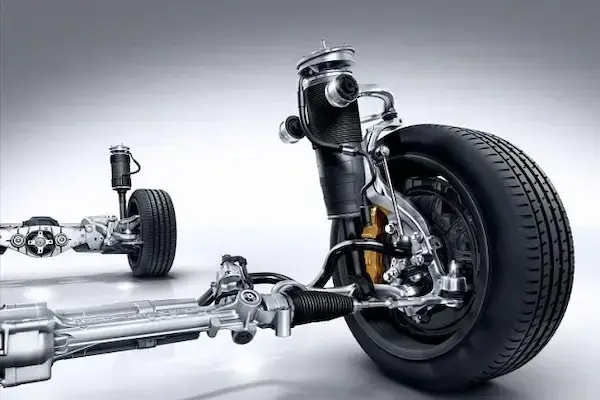The Future of Suspension Systems: Innovations and Emerging Technologies

The suspension system of a vehicle is one of the most critical components that determine the vehicle's safety, comfort, and handling. Over the years, the suspension system has undergone significant changes, with the primary aim of improving performance, ride quality, and fuel efficiency. With the advent of new technologies and the increasing demand for electric and autonomous vehicles, the future of suspension systems looks promising. In this article, we'll explore some of the innovations and emerging technologies that are shaping the future of suspension systems.
-
Electronic Suspension Systems
Electronic suspension systems are the latest innovation in the automotive industry, and they are rapidly gaining popularity. These systems use electronic sensors to monitor the vehicle's motion and adjust the suspension accordingly. The sensors measure parameters such as steering angle, vehicle speed, and road conditions to optimize the suspension's performance. Electronic suspension systems provide a smoother ride, better handling, and improved stability.
-
Air Suspension Systems
Air suspension systems use air springs instead of traditional coil springs to absorb shock and vibrations. Air suspension systems have several benefits, including better ride quality, improved handling, and the ability to adjust ride height to suit different driving conditions. These systems are popular in luxury vehicles and high-performance sports cars.
-
Magnetic Ride Control
Magnetic Ride Control is a suspension technology that uses magnetorheological fluid and an electromagnetic field to adjust the suspension's stiffness. The technology provides real-time damping adjustments that improve ride quality and handling. Magnetic Ride Control is currently available in high-end vehicles, but it is expected to become more widespread in the future.
-
Predictive Suspension Systems
Predictive suspension systems use cameras, radar, and other sensors to analyze the road conditions ahead and adjust the suspension in real-time. These systems can predict bumps and potholes on the road and adjust the suspension accordingly to provide a smoother ride. Predictive suspension systems can also improve vehicle stability and handling in various driving conditions.
-
Active Suspension Systems
Active suspension systems use electronic sensors to detect the vehicle's movements and adjust the suspension accordingly. These systems provide better handling, improved ride quality, and increased stability. Active suspension systems are currently used in high-end sports cars and luxury vehicles, but they are expected to become more widespread in the future.
Conclusion
The future of suspension systems is exciting, with several emerging technologies that promise to revolutionize the automotive industry. Electronic suspension systems, air suspension systems, magnetic ride control, predictive suspension systems, and active suspension systems are just a few of the innovations that are shaping the future of suspension systems. As a leading manufacturer of suspension parts, Rodonax is committed to staying at the forefront of these technological advancements to provide its B2B clients with the best products possible.
